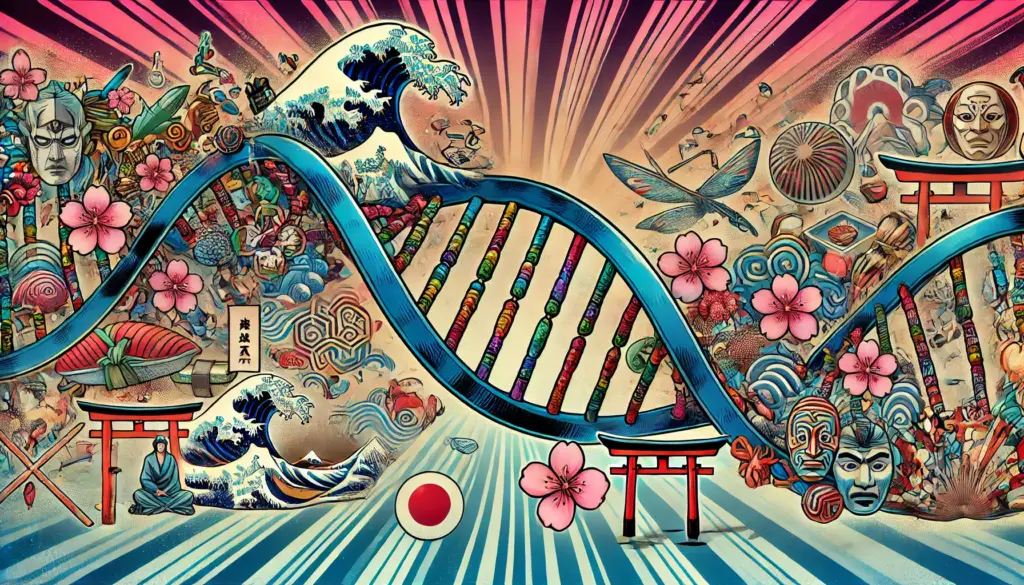
For many decades, Japan has been regarded — even by its own citizens — as a “homogeneous island nation.” It’s a phrase often echoed in political speeches and media portrayals. But this widely accepted view is not only misleading — it’s historically incorrect.
The truth is that Japan was built by immigrants. From prehistoric settlers to advanced migrants from the Korean Peninsula and China, the Japanese archipelago has long been a multicultural hub. Ancient DNA and archaeology tell a story far richer and more complex than the postwar narrative of ethnic purity.
So how did the myth of “one people, one race” take root? And what does Japan’s true origin story reveal about its identity today?
🌀 Jōmon vs. Yayoi: A Clash of Cultures, Not Civilizations
Let’s start at the beginning — or as close to it as archaeology allows.
The Jōmon people, Japan’s earliest known inhabitants, lived in the archipelago from around 14,000 BCE to 300 BCE. They were hunter-gatherers with a surprisingly sophisticated culture: they made pottery, built semi-permanent homes, and practiced animistic spirituality. Genetic evidence links them to Siberian and Southeast Asian populations.
Then came the Yayoi people, arriving between 300 BCE and 300 CE. These migrants brought something revolutionary: wet-rice agriculture, metal tools, and a more hierarchical social structure. Originating likely from the Korean Peninsula and parts of China, the Yayoi were drastically different in both technology and appearance.
The common myth suggests the Yayoi “replaced” the Jōmon. But genetic studies and burial records show a more nuanced picture: intermarriage, coexistence, and assimilation. The modern Japanese population is the result of this blend — a foundational multicultural fusion.
🛕 Torai-jin: The Immigrant Wave That Built a Kingdom
The next great transformation came during the Kofun period (250–538 CE), a time when Japan began forming centralized rule and elite classes. This period was also marked by a flood of skilled immigrants known as torai-jin (渡来人) — literally “people who came across [the sea].”
Many of these migrants were refugees or envoys from the collapsing kingdoms on the Korean Peninsula, such as Baekje and Goguryeo. They included:
- Artisans and blacksmiths, who taught metalworking and architecture
- Buddhist monks, who introduced religion, medicine, and art
- Confucian scholars, who laid the foundation for Japan’s political thought
- Silk weavers and agricultural specialists, who modernized production
Far from being outsiders, many torai-jin were welcomed into elite society. Some were even granted noble ranks. They helped build the Yamato state, Japan’s earliest unified political structure — the direct ancestor of the modern Japanese Imperial line.
🧬 DNA and Bones: Science Destroys the Purity Myth
In recent decades, genetics has transformed our understanding of human history — and Japan is no exception.
A 2021 joint study by Japanese and European researchers analyzed ancient remains across Japan and found clear evidence of three distinct ancestral sources:
- Jōmon (Indigenous hunter-gatherers)
- Yayoi (Rice farmers and early migrants)
- Kofun-era migrants (Mainland East Asians, especially from Korea and China)
This tri-layered genetic model shows that Japan’s population was never “pure” or isolated. In fact, groups like the Ainu of Hokkaido and the Ryukyuans of Okinawa preserve unique blends of these ancestries, challenging the idea of a singular Japanese race.
These findings are now widely accepted among scientists, yet rarely discussed in classrooms or mainstream media.
🏯 Myth-Making in the Meiji and Modern Era
So why does the image of a homogenous Japan persist?
The answer lies in the Meiji Restoration (1868–1912) — a time when Japan was racing to become a modern nation-state and fend off Western imperialism. To unify its people, the government promoted a national identity based on cultural and ethnic uniformity. Dialects were suppressed, minority groups like the Ainu were forcibly assimilated, and imperial propaganda emphasized racial purity.
After World War II, this narrative reemerged — not as imperial pride, but as a way to differentiate Japan from its multiethnic Asian neighbors. The phrase “tan’itsu minzoku” (単一民族), meaning “single ethnicity,” was used by prime ministers and bureaucrats well into the 2000s.
But make no mistake: it was always a political construct, not a reflection of history or biology.
🔄 Why This Matters Today
In 2025, Japan is grappling with a demographic crisis: an aging population, a shrinking workforce, and declining birthrates. Immigration is slowly — and controversially — increasing to fill labor gaps. Yet policies and public opinion remain cautious, influenced by old myths of “cultural incompatibility.”
Recognizing Japan’s immigrant past is more than a historical correction — it’s a framework for the future. It shows that:
- Japan has always evolved through outside influence
- Cultural diversity isn’t a threat, but a historical norm
- National strength can come from adaptation, not isolation
By embracing its true multicultural roots, Japan can move toward a more open, inclusive, and resilient society.
🌏 Conclusion: A Nation Built by Strangers, Remembered by Few
From Jōmon hunters to Korean monks, from Chinese scholars to Southeast Asian settlers, Japan was never a closed island. It was — and still is — a land shaped by migration, mixing, and multicultural exchange.
The myth of homogeneity may be politically convenient, but it’s time to let it go.
Japan’s real strength has always come from its ability to absorb, adapt, and evolve. And that story deserves to be told — in textbooks, classrooms, and everyday conversations.



















































